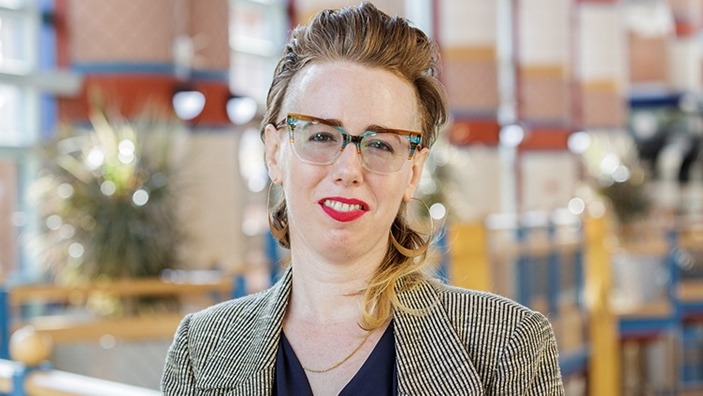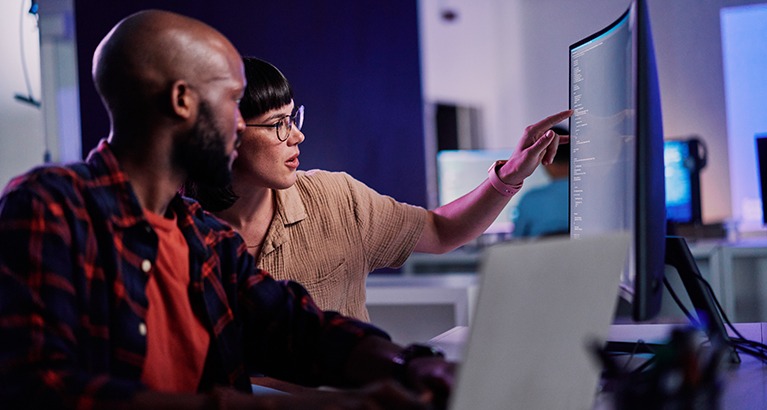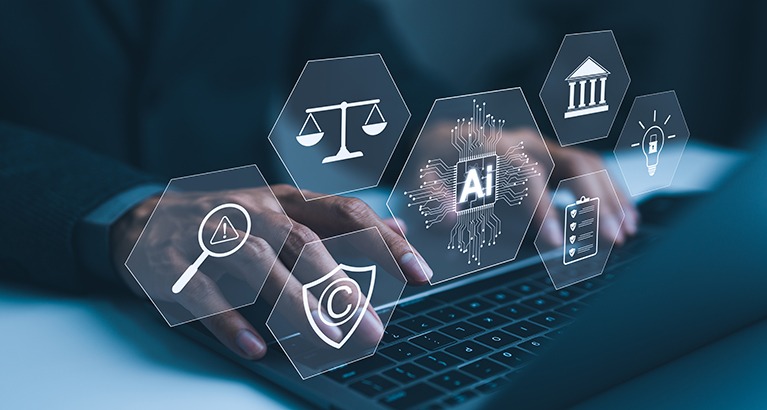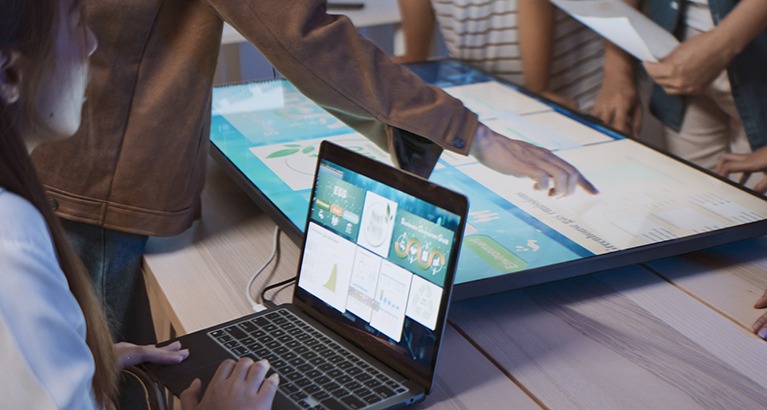The concept of digital twins – a virtual representation model loaded with relevant data that can be tweaked to study how changes to the model affects the physical twin object accurately – is being applied to everything from automobiles to power plants to the human body itself. The potential is vast, because the cost of making such tweaks is far lower than experimenting with such changes in the real world.
Using digital models to draft future predictions

A digital twin, like much of today’s technology world, is a collection of algorithms that make predictions based on data. But unlike other algorithms such as those used in travel-advice websites (which help tourists decide which hotel to stay in based on others’ past experience), a digital twin is designed not just to reflect other experiences but to create actions in a performative loop.
“A good example of this is an adjustment by an on-ground engineer in the rate of air forced through a jet engine’s compressor, an action that is automatically performed by computer or the pilot in the air,” says Virginia. “Likewise, action by the in-flight engine should create an action on the ground in order for the digital twins to be synchronised.”
The research by Virginia expands on previous studies of digital twins by asking what types of organising practices produce predictions that will become performative, because this is crucial for utility in organisational design.
Accepting the reality of digital models
Prior research had shown “great variation in whether people accept the reality that is simulated through digital models”, says Virginia’s research, so the effect of digital twins on organisational action “is critically dependent upon whether or not people take them for granted. Actors have taken a model for granted when they believe that what is happening within the model will also happen outside the model once certain decisions are made.”
So under what conditions are such digital twins likely to become taken for granted and thus act performatively? This answer is especially important as digital twins move beyond physical assets such as jet engines into situations with more social components (such as modelling a car crash) owing to the complicating effect of human decisions and reactions.
5 ways organisations take things for granted
Previous studies have identified 5 key ways that we know when something gets taken for granted in organisations and institutions – such as the commercialisation of science in universities, which once was far from taken for granted but rather often seen as something odd and even unseemly.
These 5 ways are:
- something that is taken for granted is no longer debated
- a single interpretation is now in place instead of many
- actions and processes are accepted by others uncritically
- roles and routines evolve to enable and support one way of thinking and acting and to constrain others
- when something is taken for granted it becomes the foundation upon which other action is made possible
Maps and ‘The Matrix’ help to illustrate digital twins
“Take the example of a map. Once people are able to treat a map as if it is reality, not a limited representation of reality, then the map as a digital twin can become taken for granted and therefore be more effective. Anyone who has seen the movie ‘The Matrix’ (from 1999) knows that a key theme of that movie is that the Matrix only works when the people don’t know that they are living in a simulation.
“If the model and reality are coupled, then you’ll stop treating it like reality, and will stop ‘acting within the model.’ For a digital twin to be really useful and able to represent social processes, as well as technical ones, it needs to be decoupled from its referent in the minds of its users and represent the one reality of the thing or process it represents. It has to be its own reality.”
“Take the computerisation of an assembly line: the model needs to be perfectly coupled with the physical assembly line or you wouldn’t trust the model and you wouldn’t use it. But if the model is technically perfect, then you could forget about the real assembly line and just do all of your work maintaining and running the assembly line from the digital twin without worrying about whether or not it was faithfully being replicated in physical reality.
“You’ve decoupled it and are just using the twin as a taken-for-granted reality.”
Take the example of a map. Once people are able to treat a map as if it is reality, not a limited representation of reality, then the map as a digital twin can become taken for granted and therefore be more effective.
Research into how digital models are taken for granted
The research by Virginia argues that while indicators are helpful in understanding when a digital model has been taken for granted, they stop short of explaining how digital models are taken for granted.
“We therefore extend existing theories of taken-for-grantedness to consider how digital models might become taken for granted,” says Virginia. “By showing how digital models are different, we’re addressing the role of what we term ‘computational infrastructure’”.
Algorithms are constructed out of equations that represent how properties affect the performance of the object. To understand how digital models become taken for granted, it’s important to examine how stakeholders lose track of technological mediation.
“We talk in the conclusion about ‘coupling’ and ‘decoupling’,” says Virgina. “The idea is that you take a digital twin for granted when you treat it as a reality in its own right. You stop comparing it to its referent.”
Why it is important a digital twin is taken for granted as being real
In academic language, such twins are designed to be ‘performative’ – not to merely predict the future but to produce (perform) changes in the twin that correspond to changes in the model. But for such changes to be implemented by decision-makers and accepted more broadly, it’s necessary that the model be seen as a faithful representation – in other words, the digital twin must be taken for granted as real.
That’s the focus of research co-authored by Virginia Leavell, Assistant Professor in Organisational Theory and Information Systems at Cambridge Judge Business School, that looks at the implications of digital twins for organisational design in fields ranging from engineering to financial markets to healthcare.
“Even marginally accurate predictions of the future are believed to give those who use them an edge in the present,” says the research by Virginia published in the Journal of Organizational Design.
“But a growing body of research on performativity within organisations suggests that predictions made by digital models do not just represent a possible future state of a system. Rather, they can perform their predictions by sparking a chain of events that can lead to the construction of the very reality they purport to describe.”
Even marginally accurate predictions of the future are believed to give those who use them an edge in the present.
Featured faculty
Virginia Leavell
Assistant Professor in Organisational Theory and Information Systems
Featured research
Leonardi, P.M., Leavell, V. (2024) “How the map becomes the territory: prediction, performativity and the process of taking digital twins for granted” Journal of Organization Design





